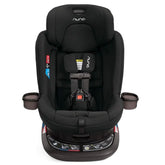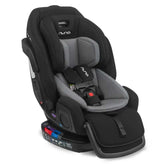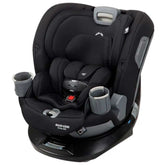Sensory Play Ideas for Babies & Toddlers: Why It’s Important

Updated 23 Dec 2024
If you’ve ever let your little one squish their hands through finger paints or dig around in the sand with different tools, you’re acquainted with the idea of sensory play. Sensory play offers major developmental benefits to babies and toddlers alike. It’s a form of hands-on fun that lets your child explore a variety of sights, sounds, smells, tastes, and textures on their own. Let’s take a look at why sensory play is so important, when to start sensory play for babies, and what sensory activities you can easily do at home.
What Is Sensory Play?
Sensory play focuses on activities that employ your child’s senses, allowing them to expand their language skills and motor skills. It also fosters cognitive development, promotes social interactions, and helps them learn to experiment. Sensory play helps children develop their sense of movement and balance (the vestibular system). It also enhances their proprioception, the sense that allows our limbs to move into the right position, with the right speed and the right amount of force required for the task.
Benefits of Sensory Play for Toddlers and Babies
Sensory play offers important developmental advantages from birth through the preschool years. It helps develop neural connections within your child’s brain that allow them to engage in complex activities. By participating in sensory play, your child is essentially “growing their brain” and learning from their environment. Here’s how sensory play can benefit and help your child.
- Aids in language development. By immersing their senses, a child learns how to describe what they’re doing and how it feels, ultimately utilizing more complex, descriptive words to express themselves as they grow.
- Expands fine motor skills. Tactile play that concentrates on activities, like mixing, pouring, or building, encourages the use of small group muscles and allows children to practice coordinating their movements.
- Develops gross motor skills. Sensory play helps with activities that engage the large muscles of your child’s entire body (core, legs, and arms). Whether it's learning to crawl or trying to ride a bike, sensory play allows them to practice their dexterity.
- Fosters cognitive development. Sensory play allows a child to problem-solve and work out the challenges they encounter. It encourages them to question how things work, experiment with different solutions, and analyze the results.
- Calms them. Sensory play can help a child learn to regulate their level of stimulation. The squeezing sensation of a hug or the heft of a weighted lap pad can soothe and comfort a child who is having trouble focusing or calming themselves.
- Promotes social interaction. Sensory play teaches children inclusivity, how to adjust to playing with others, how to work through problems, and how to communicate.

When to Start Sensory Play for Babies and Toddlers
Sensory play looks different depending on your child’s age and stage of development. Newborns love listening to lullabies and the soft touch of a plush toy, while older infants enjoy squeezing squeaky toys in the bath. Toddlers like to engage in more complex sensory activities, like squishing their fingers through a pile of shaving cream or searching for objects in a bin of rice.
Observe how your child responds to different types of sensory play. If it’s too overwhelming for them, they may begin to cry or fuss. Allow your child to set the pace of the activity. If your child seems a little uncertain, you may want to model the activity for them so that they can copy what you’re doing. Don’t force them to try a toy or activity when they’re not ready. Simply take a break and come back to it later.
Ready to engage in a little sensory play? Try some of these simple, stimulating activities to have fun with your baby or toddler.

Sensory Play Ideas for Babies
Babies can only watch at first, absorbing the textures, sights, smells, and sounds around them. Before you know it, they’ll be on the move, ready to engage with whatever fascinates them.
- Take a walk. Describe the sights, sounds, and feelings along the way. (“Look at that pretty blue bird,” or “The warm sunshine feels good.”)
- Have tummy time on a bright surface. Use a colorful blanket or playmat to make tummy time more visually engaging.
- Splash in the tub. Older babies will delight in toys that float, splash, pour, and squirt.
- Make a sensory bag. For older infants, pour something soft and squishy, like hair gel or shaving cream, into a zip-top bag. Seal the bag with strong tape and let your child have fun squishing it (vigilantly supervised at all times).
- Let them gnaw on things. Keep plenty of clean, infant-safe teethers and rattles on hand for your little one to gum. Babies learn by feeling items with their mouths.
- Show them high-contrast objects. Black and white images help stimulate the optic nerve in newborns.
It's hard to miss this high-contrast crib and attachable stroller toy. With 3 unique baby toy attachments - rattle and mirror, crinkle paper, and teethers - it's okay for your little one to grab the tiger by the tail! The Manhattan Toy Wimmer-Ferguson Tiger Spiral Toy is based on scientific research of visual development in early infancy. Designed to engage babies from birth, providing playful opportunities to practice developmental skills. All toys feature high-contrast graphics to encourage early visual activity and graphics are repeated from toy to toy to encourage “pattern recognition.”

Manhattan Toy Wimmer-Ferguson Tiger Spiral Toy
Sensory Play Activities for Toddlers
Once your little one begins to walk, they’re ready to try even more types of sensory play. It can definitely get chaotic, but try to take it all in stride (and maybe try the messier crafts and activities right before bathtime).
- Play music. Encourage your toddler to play a song with toy drums, keyboards, bells, shakers, or even just a pot and pan.
- Build something. Use paper towel tubes, pieces of cardboard, and other household items to build ramps. Roll toy cars or small balls down the ramps with your toddler to see what happens.
- Create sensory bins. Fill bins or other large containers with rice, pasta, shredded paper, sand, water, craft pom-poms, cotton balls, Easter grass, packing peanuts, or buttons. Give your toddler cups and large serving spoons, and let them scoop and pour to their heart’s content. Depending on your child’s age, tossing in a few small toys or figurines can also inspire imaginative play. Just be sure you’re using items that aren’t choking hazards and keeping a close eye on them when playing with smaller items like these.
- Play in the spices. Gather all your kitchen spices and let your little one try gently sniffing them one at a time. Sprinkle a little on a piece of food, like a banana or some yogurt, so they can experiment with the flavor.
- Play in the tub. Give your toddler bath crayons or let them smear shaving cream on the shower walls.
- Play outside. Digging in the sandbox, running around, or simply rolling in the grass are all forms of sensory play. Activities like playing hopscotch, using the swing set, and riding a bike are also sensory activities your little one will enjoy as they get older.
The Mushie Stacking Cups Toy adds a little Danish style and wholesomeness to your child’s play. These colorful round cups are fun and engaging for your child to look at while stacking the pieces helps them develop their organization and motor skills.

Sensory play is engaging for babies and toddlers of all ages, and it’s never too soon to start playing. Simply set them up, and let your child dive in at their own pace.










